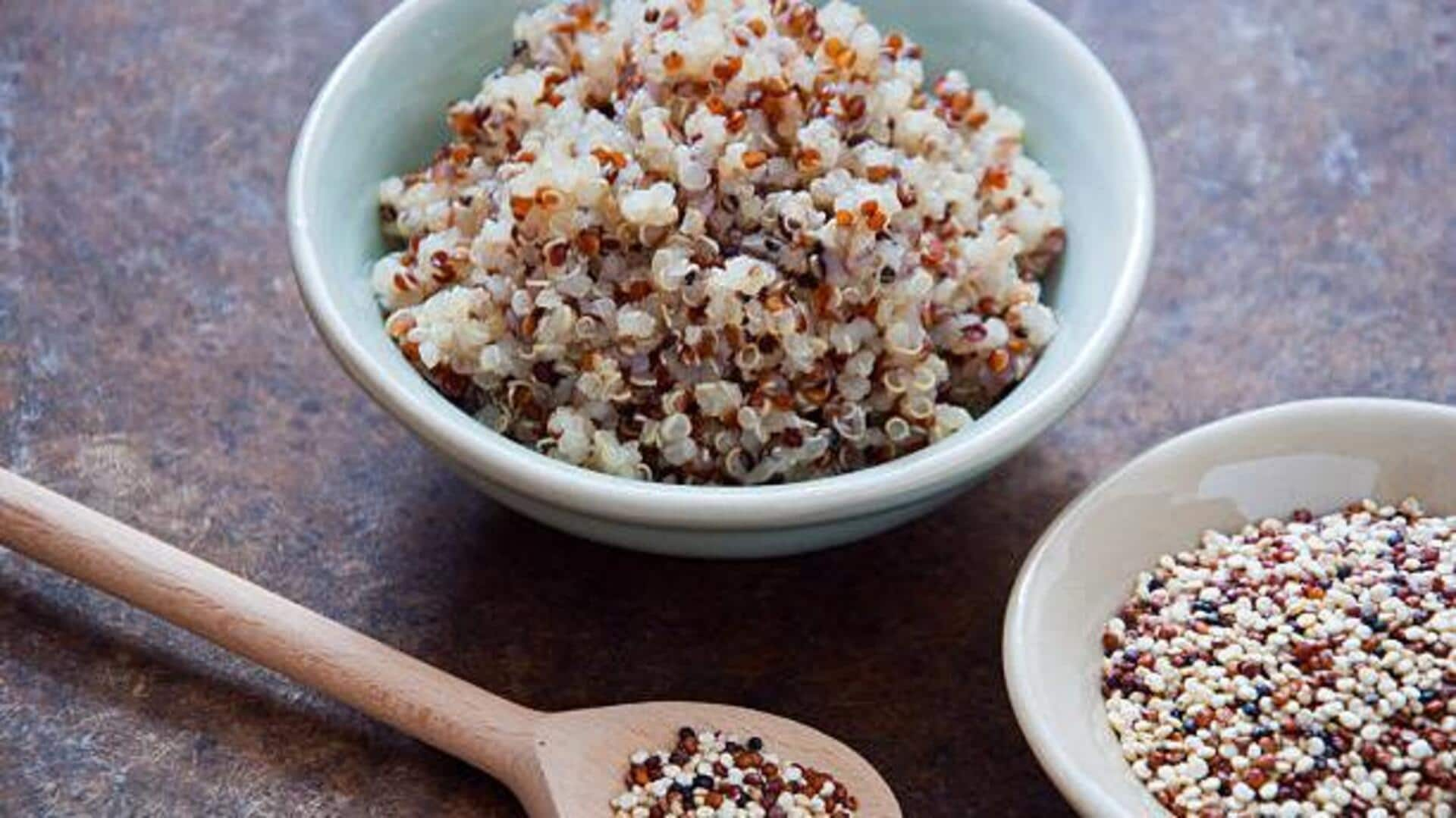
How quinoa became a modern superfood
What's the story
Once a staple in ancient civilizations, quinoa has evolved into a modern-day superfood. Its evolution from the Andean regions of South America to global kitchens is fascinating. Famous for its nutritional benefits, quinoa is packed with protein and essential amino acids. This grain-like seed has garnered attention from health freaks and gluten-free seekers alike. To understand quinoa's rise, we delve into its history, nutrition, cultivation, and market trends.
Historical roots
Ancient origins of quinoa
Interestingly, quinoa has been cultivated by Incas for more than 5,000 years in the Andean region. It was considered sacred and was referred to as "the mother grain." Incas used it as a staple food as it was resilient to harsh climates and high altitudes. Although overshadowed by other grains during colonization, quinoa continued to be an integral part of indigenous diets.
Health benefits
Nutritional powerhouse
Quinoa is famous for its amazing nutritional value, being a complete protein source having all nine essential amino acids. It is perfect for vegetarians and vegans. Quinoa is also packed with fiber, magnesium, iron, and antioxidants, nutrients that are important for improving digestion, increasing heart health, and maintaining overall well-being. All these benefits make quinoa an extremely valued food option among health enthusiasts.
Global farming
Cultivation practices worldwide
Interestingly, the growing popularity of quinoa has led to its cultivation in other countries, including the United States and Canada, where some regions provide suitable farming conditions. Despite the geographical expansion, it's imperative to stick to traditional farming methods. These methods are crucial for maintaining the quality and sustainability of the crop, striking a balance between modern demand and age-old agricultural wisdom.
Economic impact
Market trends & consumer demand
The global popularity of quinoa has affected the economies of its traditional growing regions. As international demand soared, so did prices, raising concerns about its affordability for locals who rely on quinoa as a staple part of their diet. This poses a complicated balance between global demand and local needs, highlighting the economic implications of quinoa's superfood status.
Culinary uses
Cooking with quinoa: Tips & tricks
Incorporating quinoa into meals can be both simple and versatile. First, rinse thoroughly before cooking to remove any bitterness from saponins on its surface layer. Then, boil using two parts water per one part grain until tender, approximately 15 minutes. Use cooked seeds creatively—add them into salads or soups, or substitute rice or pasta dishes with this nutritious alternative.